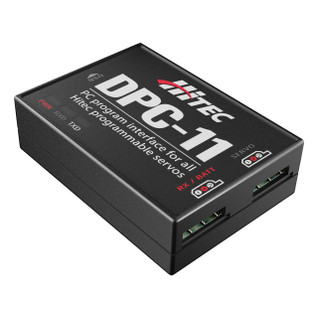HSR-M9382TH Servo
The HSR-M9382TH is the new king of standard size servos! We’ve waited a long time for a multi-turn servo of this stature and are positively giddy about what Hitec has delivered. Check out some of its high points:
Multi-Turn:
Let’s start with the killer feature! It’s multi-turn while retaining position feedback. How many turns, you ask? Up to 7 turns! But as with any servo, its rotation depends on the signal you send to it.
Programmable:
You can plug the servo in and run it with your servo controller without any programming, but keep in mind its available settings:
- Rotation: Adjust endpoints to increase or decrease the amount of rotation available. You can tailor it anywhere up to 7 turns.
- Continuous Mode: If your project requires multiple turns without feedback, toggle your servo to continuous rotation mode and let it spin without bounds in either direction.
- Speed: The servo runs at maximum speed by default, but you can slow it by plugging it in and dialing it down.
- Fail-Safe: This feature is a mere safety net, but let’s face it—things happen when using electronics. Fail-safe allows you to set the position to which the servo will travel when there’s a signal loss between the servo controller and the servo.
- Direction: This servo is bidirectional like any other servo, but if you want to change the direction it moves according to the increase or decrease of the PWM signal, you can do that with the click of a button.
- Deadband Width: This setting refers to the position accuracy of the servo. The smaller the deadband, the finer the point the servo looks for. It’s most precise at the default setting of 1. In some cases, such as running multiple servos on one channel, a wider deadband is most practical for the servos to work in unison.
- Soft Start: If you want the ramp-up from idle to max speed to be slightly lessened, you can adjust the Soft Start from 20% (default) up to 100%.
All of the features above can be accessed using the Hitec DPC-11 PC interface servo programmer. The programmer plugs into a PC with a USB to mini USB cable. It requires a 6V battery and the BLDC_HSR User interface_Ver 3.1. You cannot program the servo using the default Ver 2.9 software shipped with the DPC-11.
For those of you less eager to jump into changing parameters with a servo programmer, we’ve created some popular baseline programs we can pre-load onto the servo for you. Just select the table row that fits your project best! The table will give you a general idea of how much rotation you should expect between our four programming options. Keep in mind that you may get slightly more rotation than we’ve listed, as we don’t know your controller’s PWM range. Use the table as a general guide.
Brushless Motor:
The servo is driven by a Neu Brushless motor. It delivers unparalleled torque with low levels of audible noise, a refreshingly far cry from the screeching to which users of digital servos have become accustomed. Hitec’s brushless motors generate large amounts of torque for extended periods of time without building any of the excessive heat experienced by digital brushed motors.
Encoder:
Because the servo is multi-turn, an encoder takes the place of a potentiometer. Non-contact encoders mean you don’t have to worry about their resolution degrading over time in heavy-use applications. Note that since the servo is multi-turn, its positioning feedback is relative rather than absolute.
Titanium Gears:
The servo boasts titanium gears complimenting its available torque for ultimate durability!
H25T Spline:
Hitec continues their use of H25T spline, the standard within the R/C industry. Furthermore, they use an M3 screw to hold the horn for greater strength and ease of use.
How Far Will This Servo Rotate?
The answer to this question is partially dependent on what you are using to control the servo.
Stock:
With an Average Radio System:
0.765 Turns (275°)
Your average transmitter and receiver will output a relatively narrow PWM signal range.
Radio System + Travel Tuner:
1.19 Turns
Adding a Servo Travel Tuner to your radio system setup will allow you to achieve wide PWM signal ranges.
Wide Signal Controllers:
1.19 Turns
Controllers such as the Arduinos and Raspberry Pi servo hats can usually send a wide signal.
Reprogrammed (1.75 Turn Max):
Whether you purchase the reprogrammed option or get a servo programmer and do it yourself, a reprogrammed version of this servo will be able to achieve greater travel than it can in stock form.
With an Average Radio System:
1.125 Turns
Your average transmitter and receiver will output a relatively narrow PWM signal range.
Radio System + Travel Tuner:
1.75 Turns
Adding a Servo Travel Tuner to your radio system setup will allow you to achieve wide PWM signal ranges.
Wide Signal Controllers:
1.75 Turns
Controllers such as the Arduinos and Raspberry Pi servo hats can usually send a wide signal.
Reprogrammed (7 Turn Max):
Whether you purchase the reprogrammed option or get a servo programmer and do it yourself, a reprogrammed version of this servo will be able to achieve greater travel than it can in stock form.
With an Average Radio System:
4.5 Turns
Your average transmitter and receiver will output a relatively narrow PWM signal range.
Radio System + Travel Tuner:
7 Turns
Adding a Servo Travel Tuner to your radio system setup will allow you to achieve wide PWM signal ranges.
Wide Signal Controllers:
7 Turns
Controllers such as the Arduinos and Raspberry Pi servo hats can usually send a wide signal.
Downloads
Specs
| Dimensions | 1.58" x 0.79" x 1.50" (40.0mm x 20.0mm x 38.0mm) |
|---|---|
| Weight | 2.4oz (68g) |
| Output Shaft Style | H25T Spline |
| Voltage Range | 6.0V - 7.4V |
| No-Load Speed (6.0V) | 0.17sec/60° |
| No-Load Speed (7.4V) | 0.14sec/60° |
| Stall Torque (6.0V) | 472 oz-in. (34 kg.cm) |
| Stall Torque (7.4V) | 472 oz-in. (34 kg.cm) |
| Pulse Amplitude | 3-5V |
| Continuous Rotation Modifiable | Yes |
| Direction w/ Increasing PWM Signal | Clockwise |
| Deadband Width | 1 µsec |
| Motor Type | Brushless |
| Internal Feedback Style | Relative Encoder |
| Output Shaft Support | Dual Ball Bearing |
| Gear Type | MPD 1st Gear & 3 Titanium / Steel Gears |
| Wire Gauge | 20 AWG |
| IP Rating | IP65 |
| Servo Size | Standard |
| Max PWM Signal Range | 800-2200μsec |
| Travel per µs (Stock) | 0.306°/µsec |
| Travel per µs (Reprogrammed - 1.75 Turn Max) | 0.450°/µsec |
| Travel per µs (Reprogrammed - 7 Turn Max) | 1.800°/µsec |
| No-Load Current | 250mA |
| Stall Current | 2,700mA |









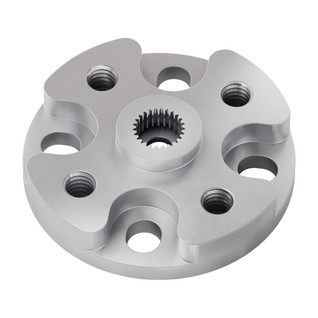

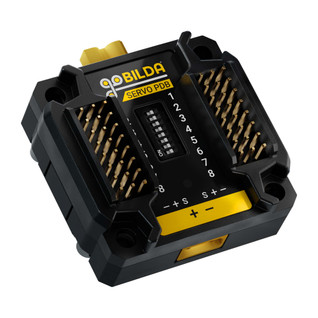



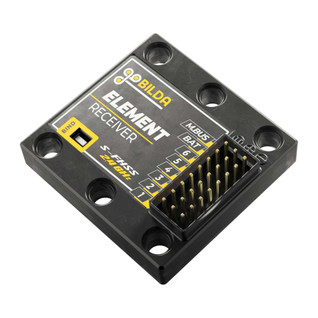




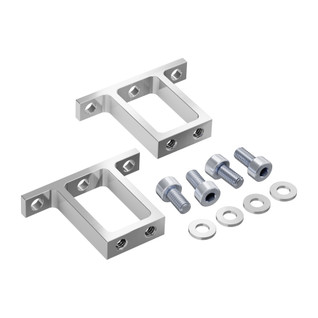
![3100-0006-0003 - (6V, 3000mAh, XT30 Connector [MH-FC], 20A Fuse, 6-3) 3100-0006-0003 - (6V, 3000mAh, XT30 Connector [MH-FC], 20A Fuse, 6-3)](https://cdn11.bigcommerce.com/s-x56mtydx1w/images/stencil/318x318/products/1163/5818/3100-0006-0003__25708__75076.1701992657.jpg?c=1)

